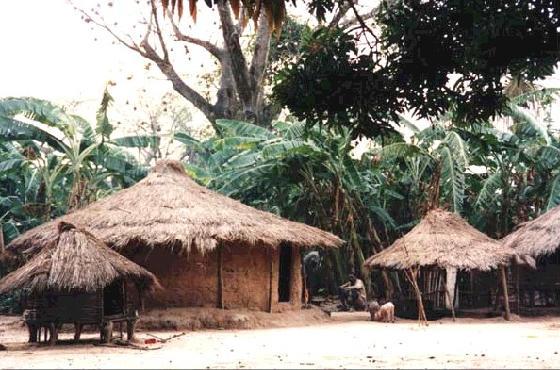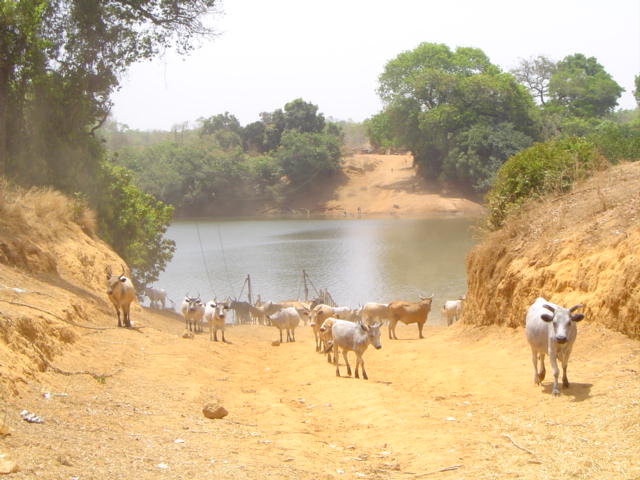Guinea-Bissau National Adaptation Programme of Action (NAPA)
Project Overview
National Adaptation Programmes of Action (NAPAs) provide a process for Least Developed Countries (LDCs) to identify priority activities that respond to their immediate needs to adapt to climate change, ultimately leading to the implementation of projects aimed at reducing the economic and social costs of climate change.
For Guinea-Bissau, the main Climate Related Hazards identified in the National Adaptation Programme of Action (NAPA) include:
- Seasonal drought
- Acute Drought
- Rise in Ocean Temperature
- Rise in Atmosphere Temperature
- Cyclones
- Average Sea Level Rise
Project Details
In Guinea-Bissau the impacts of climate change have been already been having noticeable effects on the local economy for some time, especially due to a diminishing rainfall and the gradual rise in temperature. In terms of water resources, this can be seen in aquifers experiencing decreasing quantities of water and are more easily flooded by salt water, ground waters increasingly deeper and dried-up lakes. Concerning the agrarian sector, production of Guinean staple food (rice), has diminished markedly, also due to the salinity and acidity of hydromorphous soils and the flooding of rice fields.
Due to the fact that climate changes exert a negative influence on the quality and quality of water resources through a reduction in rainfall. 14 projects were chosen in order to achieve these strategic objectives including those on the Diversification of Food Production and the Improvement in the Supply of Potable Water in Rural Areas.
Participatory evaluations of vulnerability and adaptation carried out under NAPA preparation and based on various sector studies-diagnoses, revealed that the sectors that ensure means of subsistence to the overwhelming majority of Guineans and that constitute the basis variability in weather patterns, namely: the agrarian sector (agriculture, forests and livestock), water resources, fisheries and public health.
Guinea-Bissau is situated on the West African coast (latitude 10º 59' N, between 13º 38´ and 16º 43´ W meridians). It has a surface of 36,125 square-km, maximum latitude of 193 km and a maximum longitude of 330 km. The country has common borders with Senegal to the north and Guinea-Conakry to the south and east, and has the Atlantic Ocean to the west. Its territory is divided into a continental zone and an insular one, the latter being constituted of a contiguous chain of islands - Jeta, Pecixe, Areias, Caiar, Como e Melo and the Bijagós archipelago, made up of 88 islands and islets of which only 21 are inhabited.
Climate Related Hazards
- Seasonal drought
- Acute Drought
- Rise in Ocean Temperature
- Rise in Atmosphere Temperature
- Cyclones
- Average Sea Level Rise
Main Human Vulnerabilities and Livelihood Impacts
- Agriculture
- Livestock
- Forests
- Water Resources
- Fishery Depletion
- Coastal Zone
- Sanitation
- Public Health
- Food security
Key Results and Outputs
Priority Adaptation Projects
- Rehabilitation and/or construction of protective dams and dykes
- Implementation and Mobilization of water management associations
- Support to the intensification of crop and livestock production
- Implementation of erosion control measures through soil conservation techniques and dune stabilization
- Implementation of simple structure and/or capacity building plan for the decentralized Meteorological service
- Implementation of dams and dykes to control the gradual rise of sea level
- Rehabilitation of degraded coastal areas
- Reforestation of rural areas with their specific reforestation plans based on locally appropriate species
- Promoting the transfer of forest management to local communities (GELOSE, GCF)
- Implementation of communication infrastructure in areas of high potential production capacity to increase exchange and trade
- Promoting the use of information*, education* and communication*sharing systems to reach rural communities
- Promoting the use of communication system to educate and raise awareness on health issues among the population
- Implementation of Capacity building to strengthen the health system
- Mobilization of necessary resources to prevent and control disease vectors
- Elaboration of, Information-sharing and awareness raising on the design and construction principles about infrastructures adapted to climate change
Priority Options in the Agricultural Sector (Crop Production Sub-Sector)
- Extension of short-cycle seeds
- Greater dissemination of varieties less demanding in water and resistant to prolonged drought periods
- Increase in hydraulic works
- Construction of micro dams and small dykes for water retention
- Promotion of low-cost irrigation systems
- Production diversification
Priority Options in Water Resources Management
- Rehabilitation, renewal and extension of needed infrastructure for a quantitative and qualitative improvement of water and sanitation resources
- Rehabilitation and implementation of infrastructure for the evacuation of rain water and the evacuation of residual water in critical locations in large urban centres
- Organization and sensitisation of populations for a change in mental attitudes (setting up of water-consumer associations); better knowledge on water resources (hydro-geology and hydrology) and their functioning (Training)
- Effective protection of those resources and their tapping for supply purposes
- Effective and integrated management of different ways to utilise water
- Institutional organization, reactivation of CTA, CIMA and CNA
- Legislation updating
Priority Options in Forest and Woodland Management
- Launching of nationwide survey on forests
- Setting-up of conservation units, especially in important and fragile ecosystems
- Promotion of local initiatives focusing on conservation and development
- Supply of financial and technical means to technical services
- Introduction of community-based management of forests and their extension to the north and south of the country
- Selection of rapid-growth species plants for energy purposes
- Reforesting of zones degraded and their restoring through the use in each agro-ecological zone of local species plus sustainable management of those species thus allowing their future natural regeneration
Priority Options in the Coastal Zone Management
- A requirement to guide traditional and modern techniques in research, experimenting and base studies for the exploitation of sea resources with a view to ensuring the sustainable use of stocks of commercial importance thus reducing pressure on those resources
- In order to minimize its sea fauna vulnerability to climate changes, the country needs to define an efficient management of its living sea resources aiming at: * Making use of actors’ good sense when faced with shortage of scientific information
- An immediate implementation of conservation measures before obtaining reliable data and reaching scientific consensus (which requires a long timeframe) on the status of sea resources
- Promotion experimental aquaculture in coastal areas
Priority Options in the Fisheries Sector
- Preparation of an Integrated Management Programme of Coastal Resources (PGIRC), and its respective Plan of Action on the Coast (PAC).
- Acquisition of knowledge on intern al dynamics of populations of sea resources in the area
- Integrated management of those resources and respective zone
- Appropriate legislation to ensure protection of resources, particularly regarding their access and assessment of local hydro-meteorological risks
Priority Options in the Energy Sector
- Fuelwood saving stoves
- Expanded use of Liquefied Petroleum Gas and Ethanol
- Charcoal saving stoves
- Electricity saving devices
- Development of renewables
Priority Options in the Health Sector
- Building of disease research centres
- Strengthening of measures to fight and prevent the on-set of diseases among populations
- Designing of a broader vision on the issues of climate sensitive diseases
- Promotion of capacity building in research
- Strengthening of health-information system aiming at obtaining global and complete data about the epidemiological situation.
Priority Options in Food Security
- Setting up of national security stock
- Setting up of cereal banks (silos) by peasants to guarantee a food reserve in all regions
- Setting up of an Early Warning System against risks
- Strengthening of sensitisation campaign about the importance of diversifying eating habits
Expected Outputs:
- Identify concerted and integrated priority actions based on the urgent and immediate adaptation needs to negative climate change impacts
- Widely disseminate adaptation activities with partners, stakeholders and beneficiaries
- Strengthen adaptation capacities of communities affected in vulnerable areas
- Develop synergies between the various strategic frameworks in the area of adaptation to climate change
- Assist in the preparation of the second national communication.




